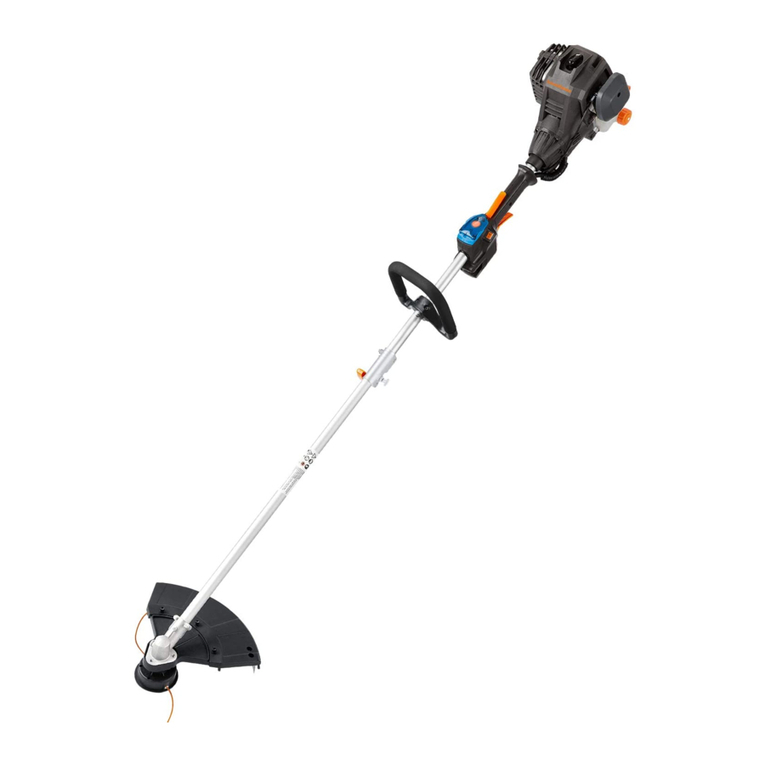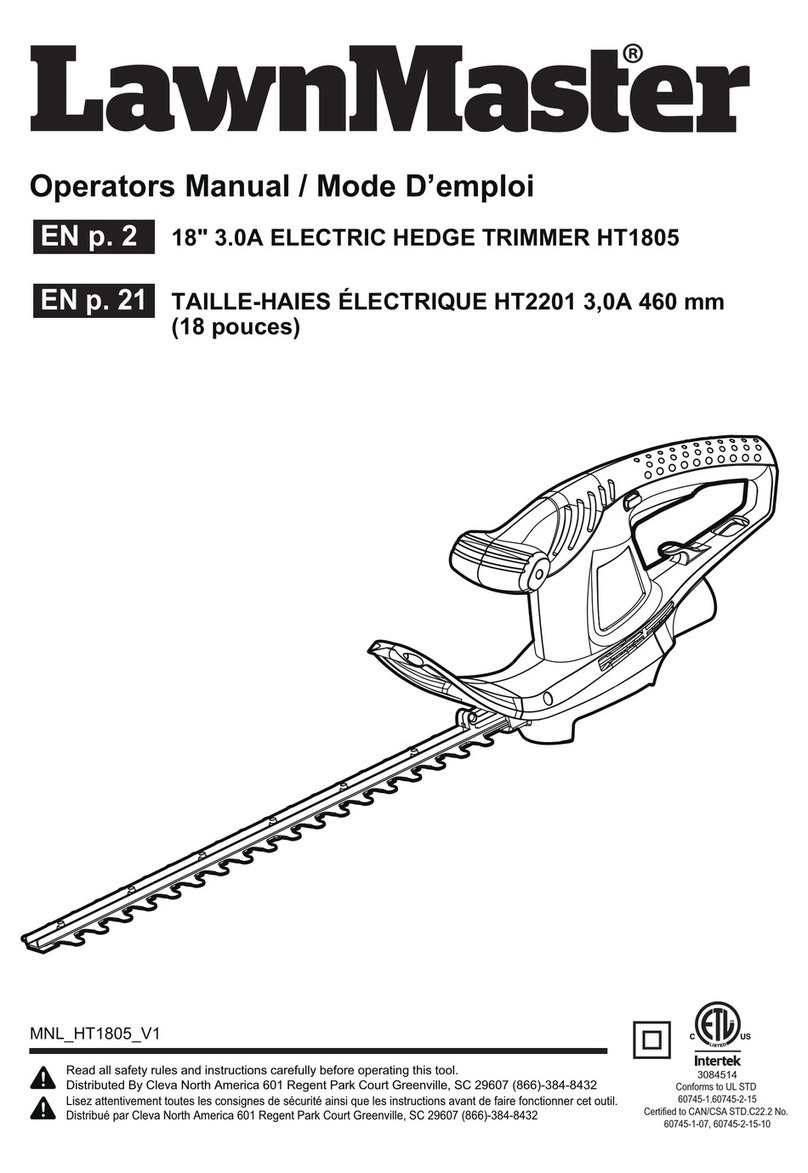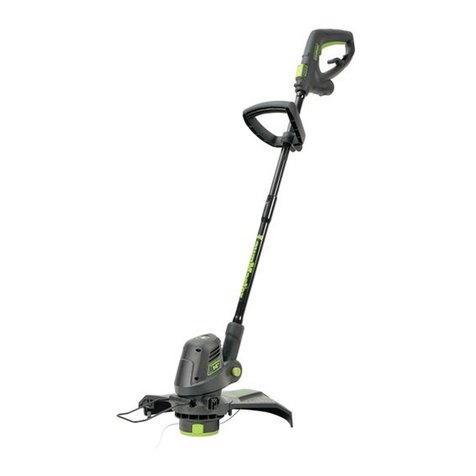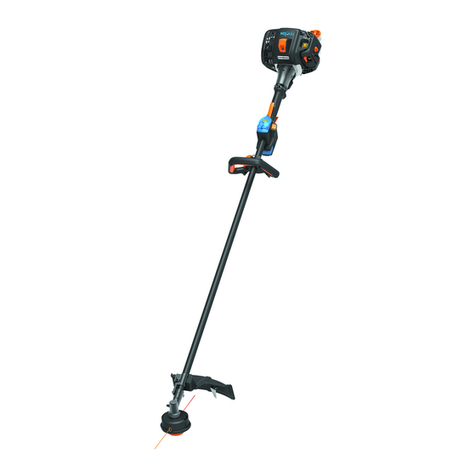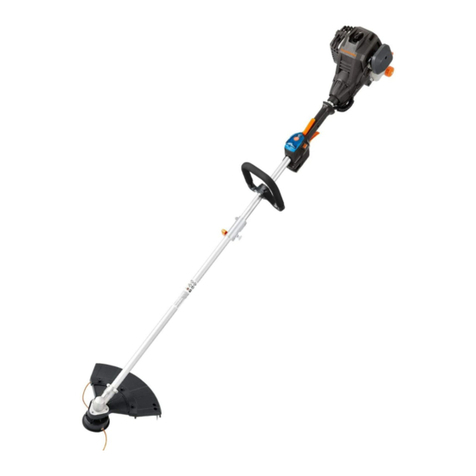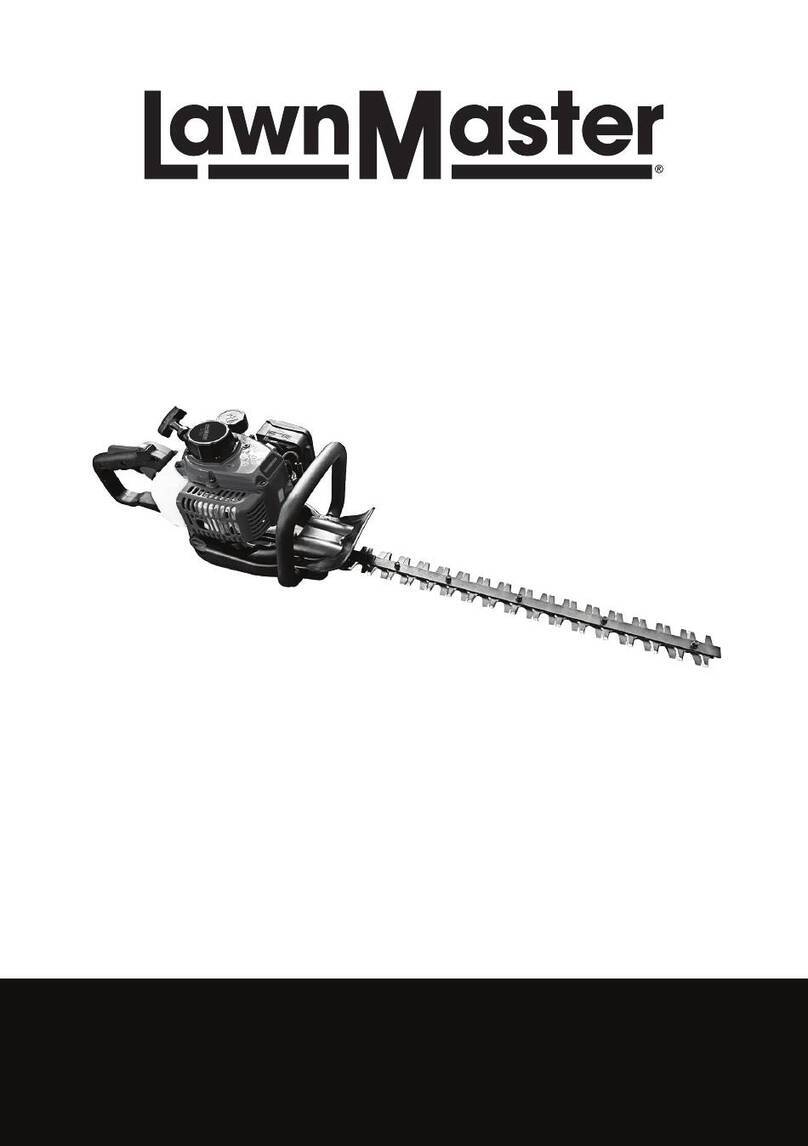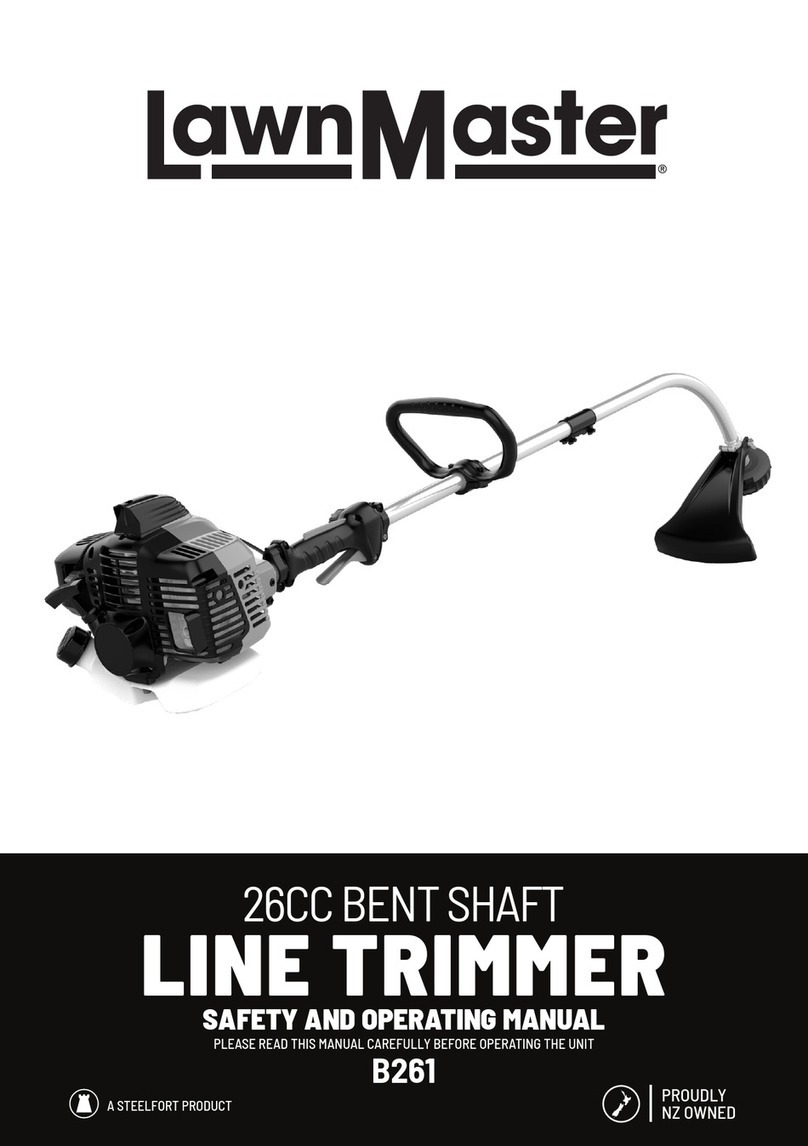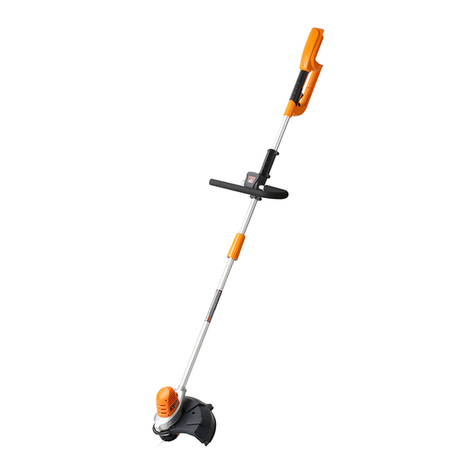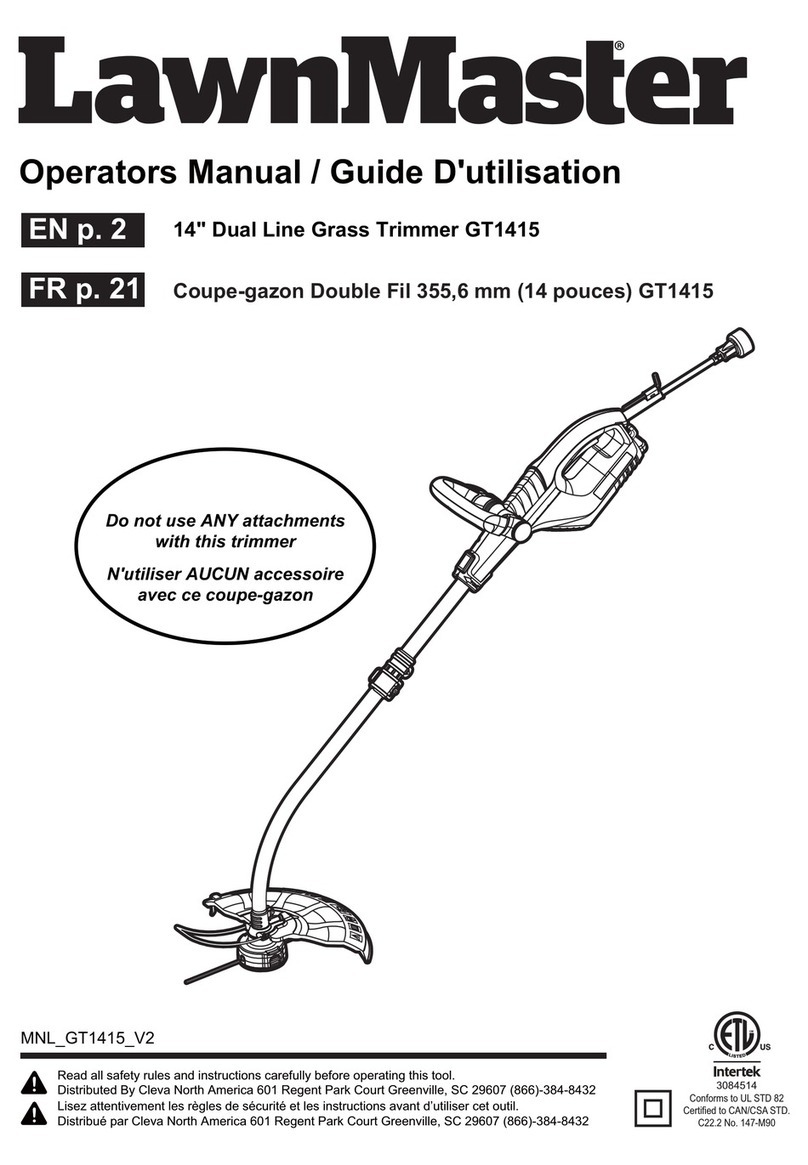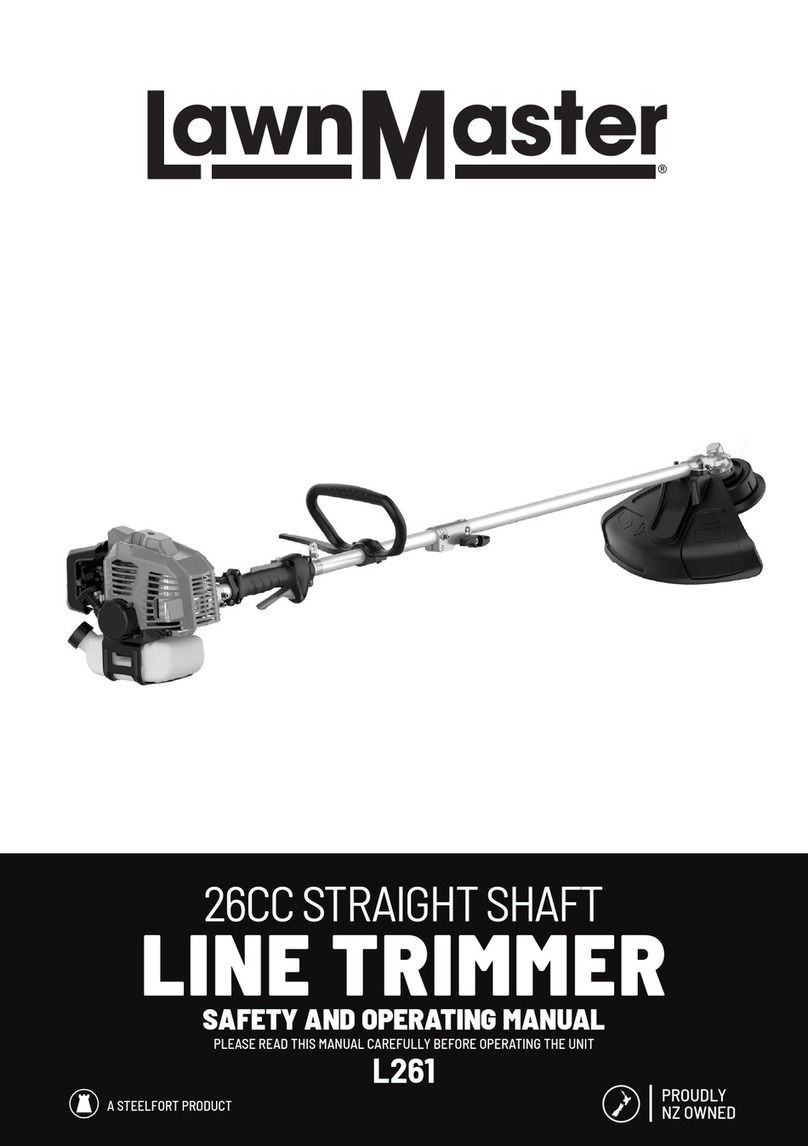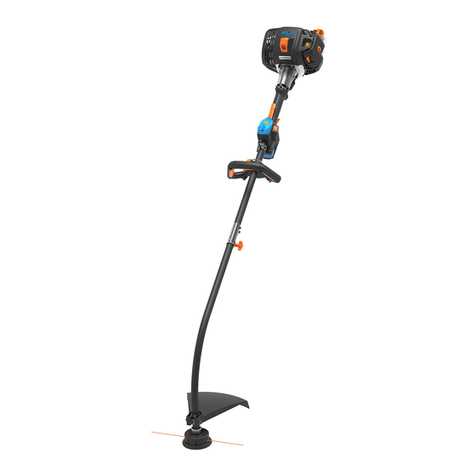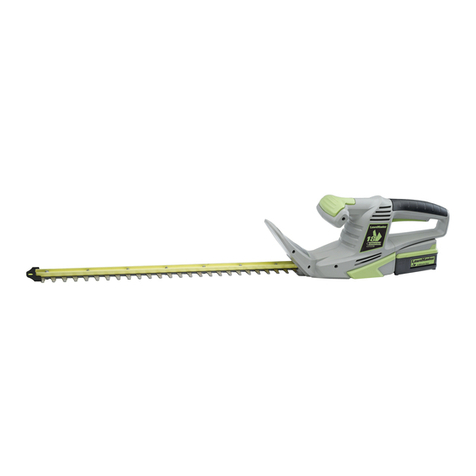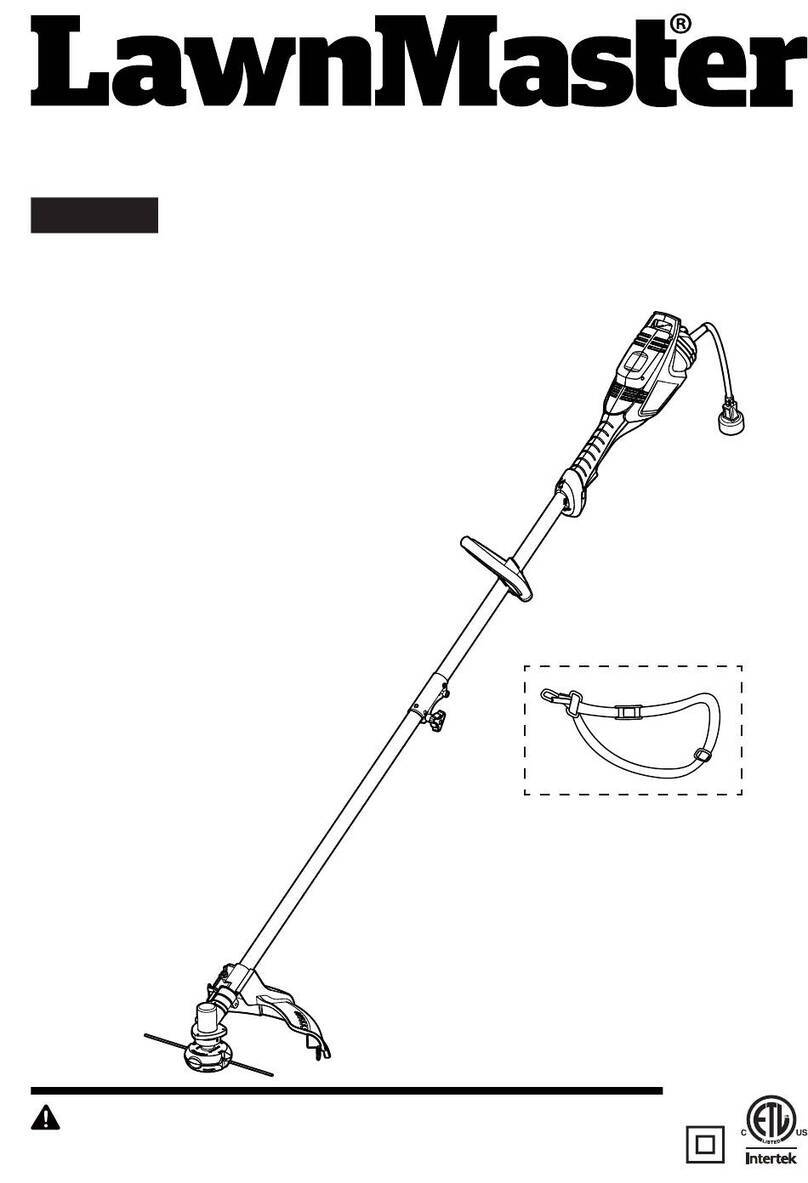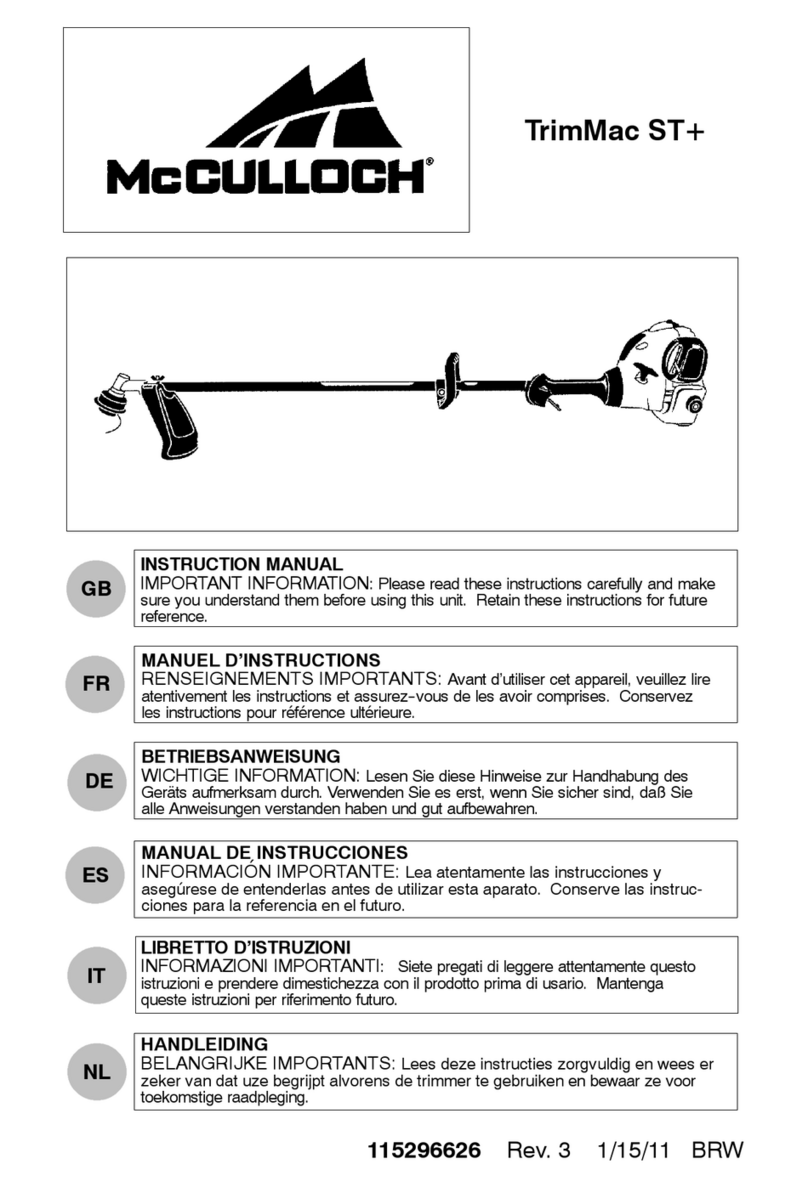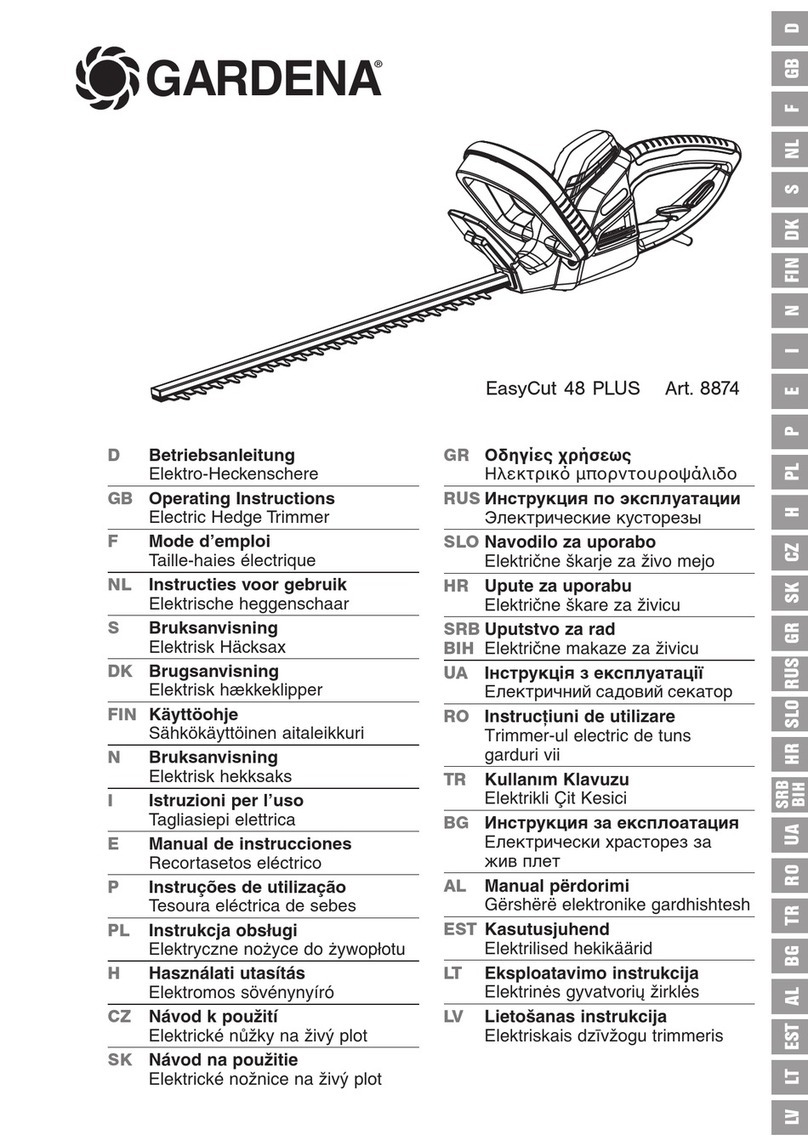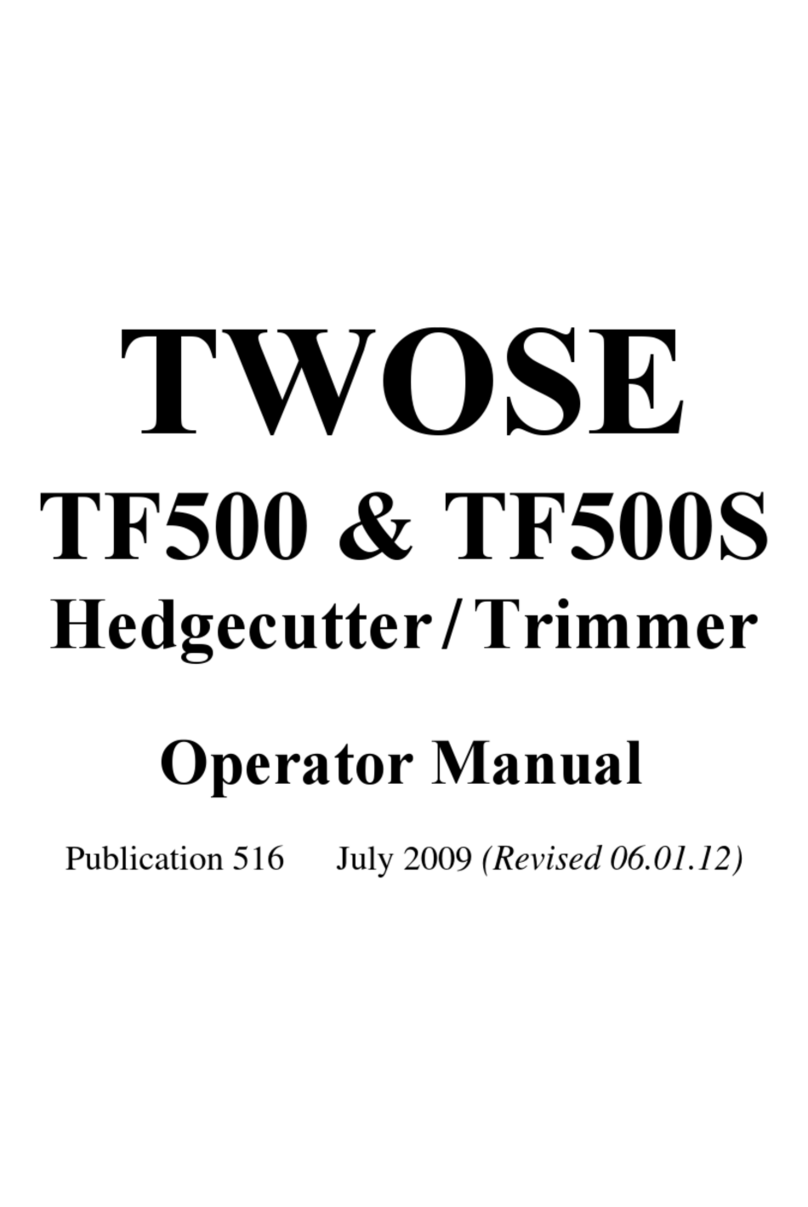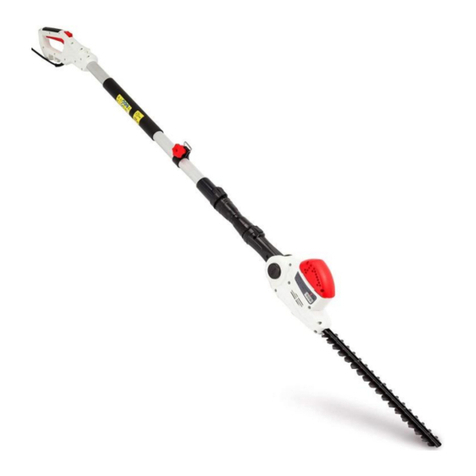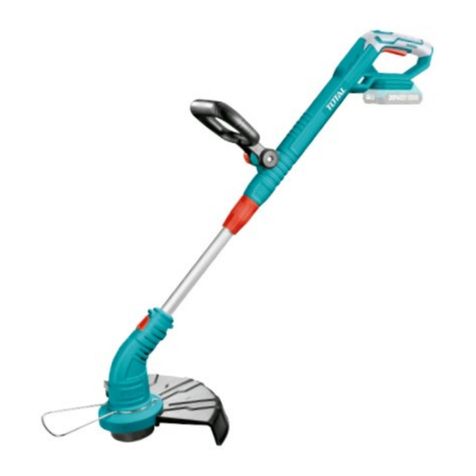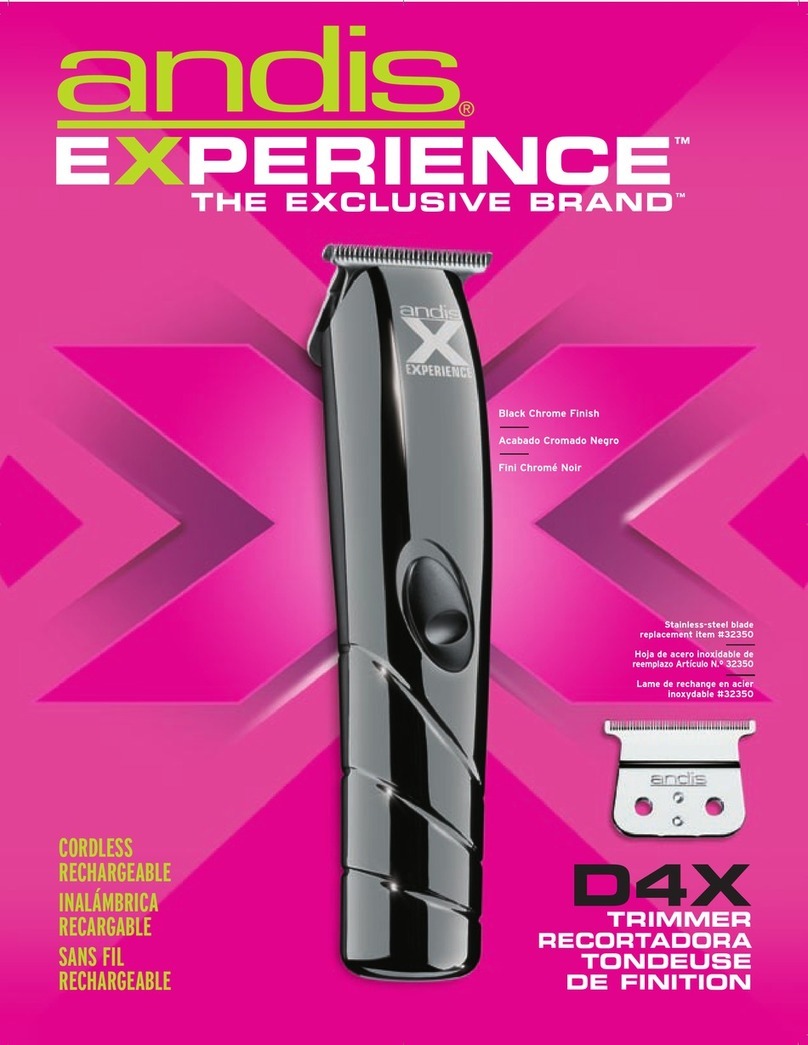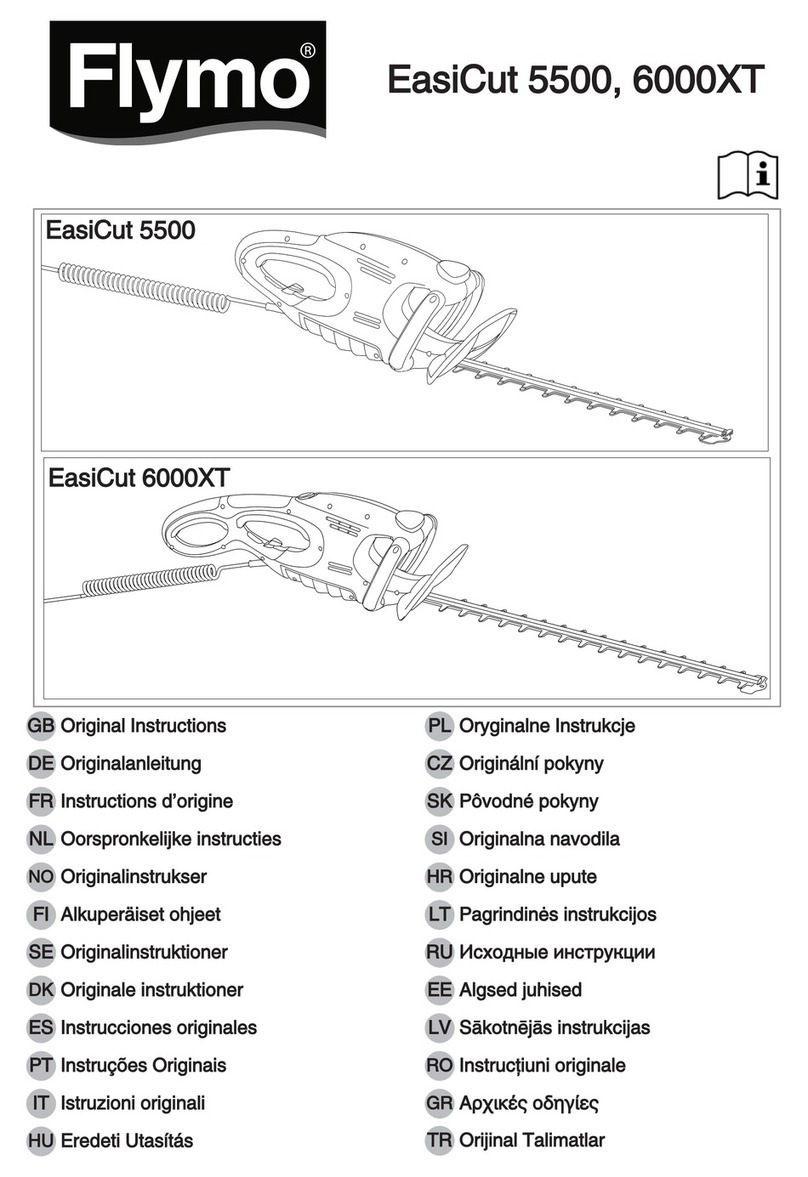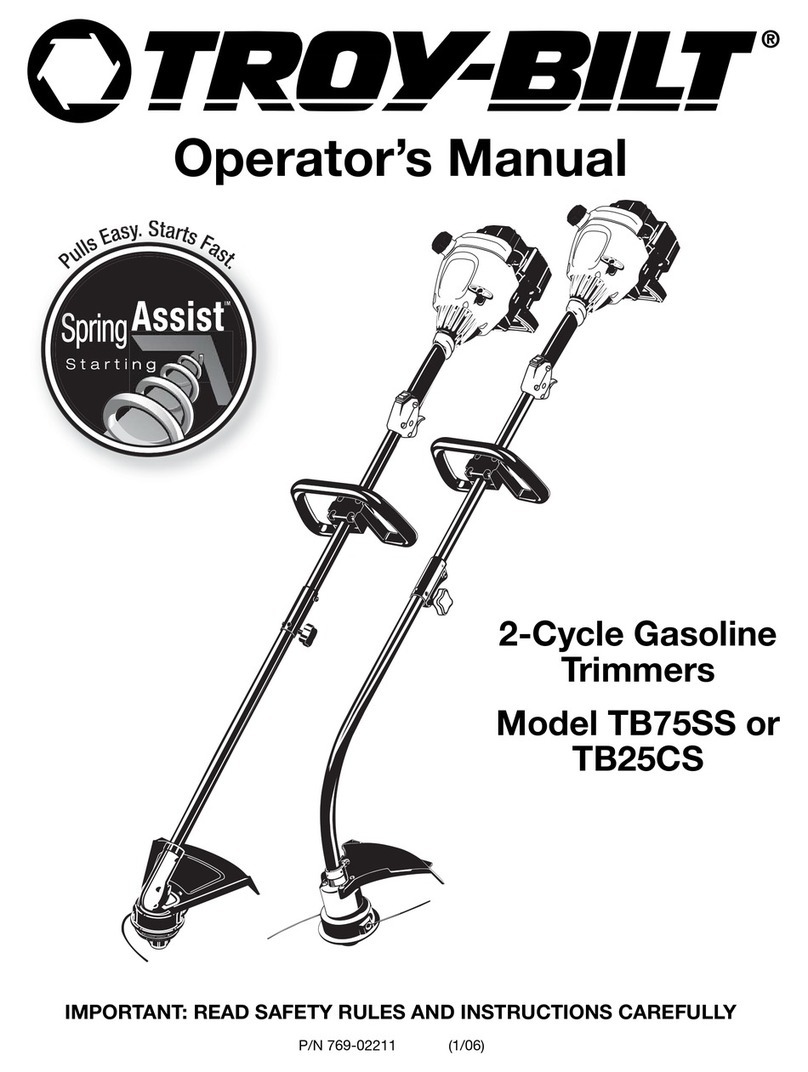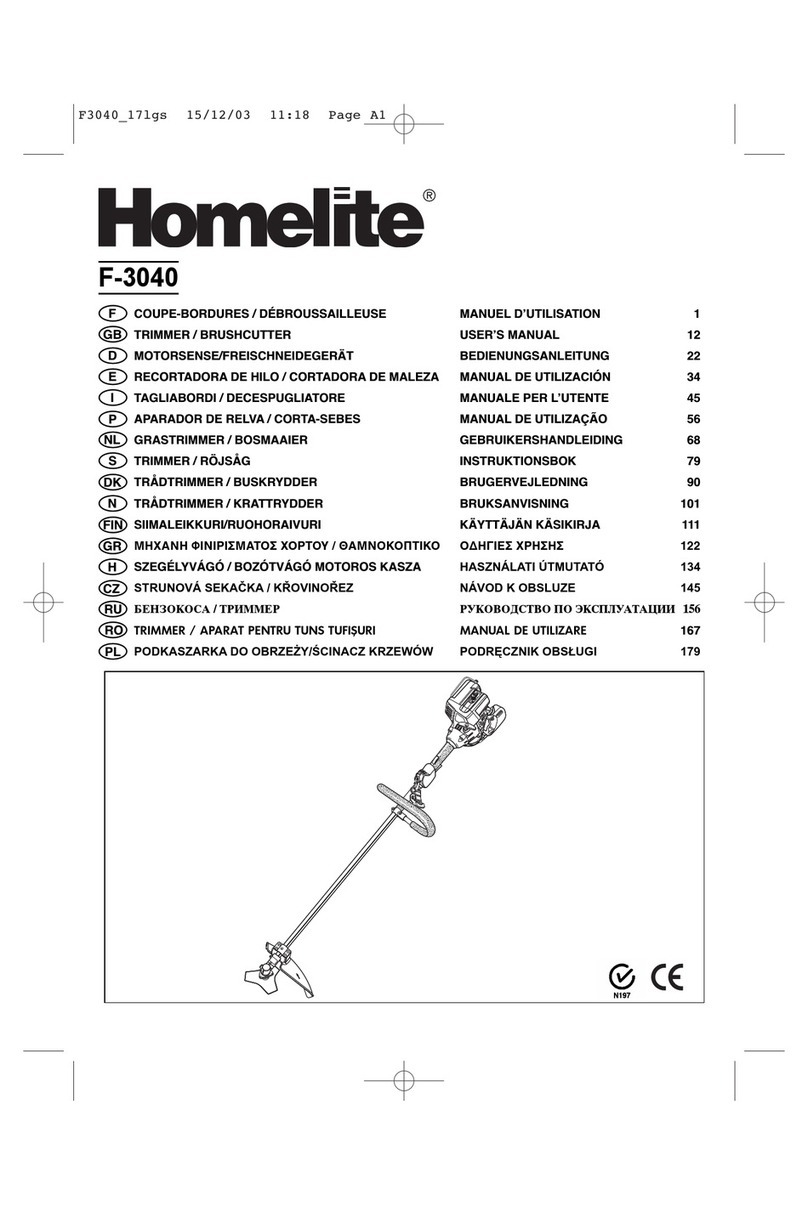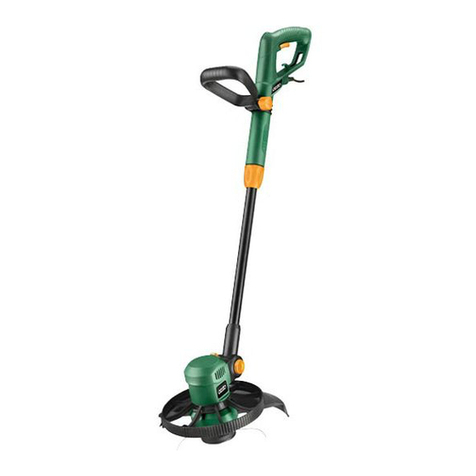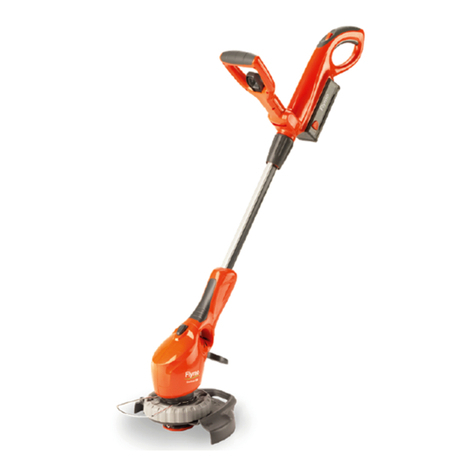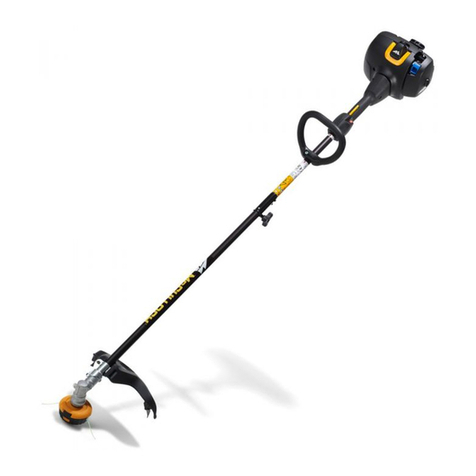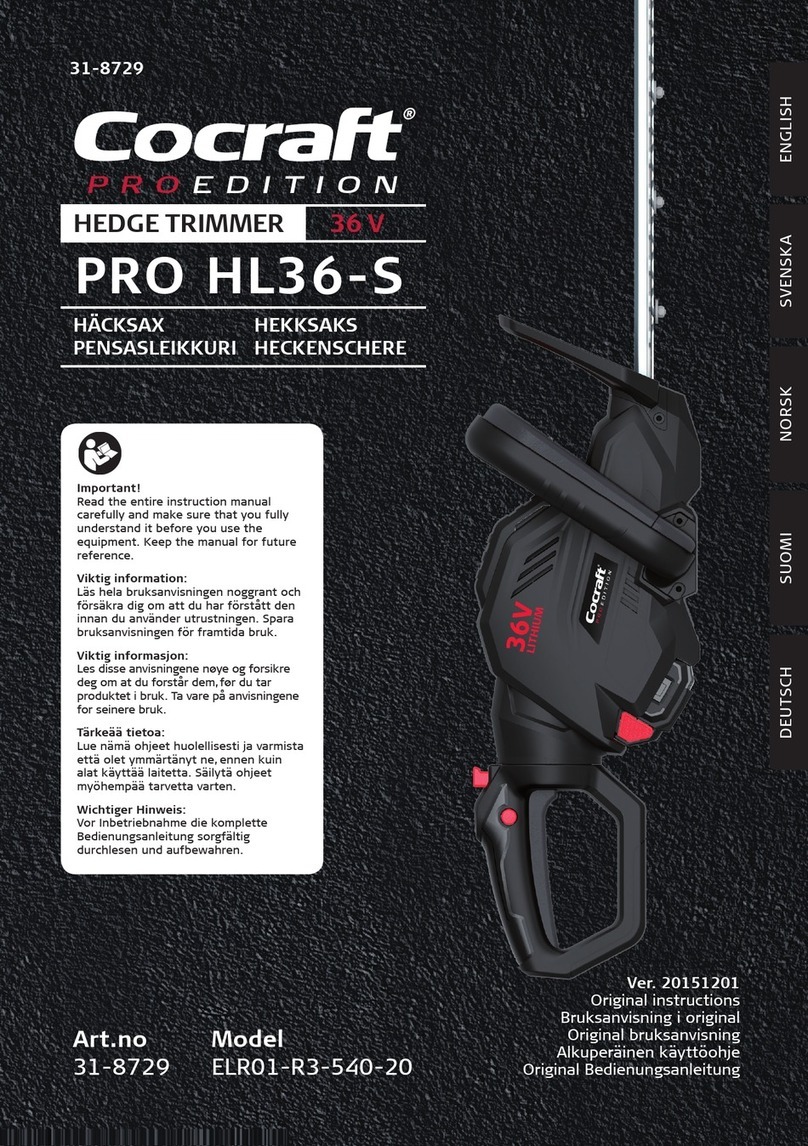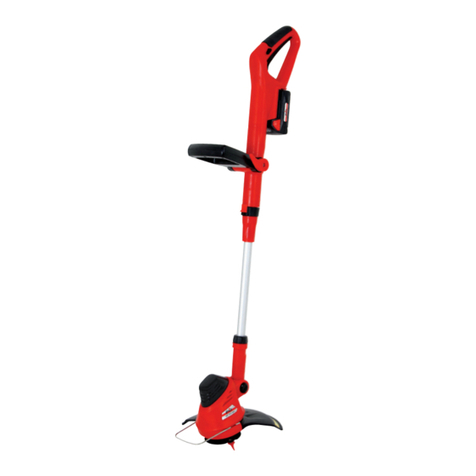
• Do not operate power tools in explosive atmospheres, such as
in the presence of flammable liquids, gases, or dust. Power
tools create sparks which may ignite the dust or fumes.
• Do not allow children or untrained individuals to use this unit.
• Don’t expose power tools to rain or wet conditions. Water
entering a power tool will increase the risk of electric shock.
• Do not handle plug or tool with wet hands.
• Never allow children to operate the equipment. Never allow
adults to operate the equipment without proper instruction.
• Always wear safety glasses with side shields. Everyday glass
-es have only impact resistant lenses. They are NOT safety
glasses. Following this rule will reduce the risk of eye injury.
Use face mask if operation is dusty.
• Wear eye protection when operating this product. Secure long
hair above shoulder level to prevent entanglement in moving
parts.
• Do not expose to rain, store indoors.
• Do not operate in poor lighting.
• Use both hands when operating the hedge trimmer. Using one
hand could cause loss of control and result in serious personal
injury.
• Keep all parts of your body away from any moving part.
• Keep hair, loose clothing, fingers and all bady parts away from
openings and moving parts.
• Wear heavy long pants, boots, and gloves. Avoid loose
garments or jewelry that could get caught in moving parts of the
machine or its motor.
• Do not force tool. Use the correct tool for your application. The
correct tool will do the job better and safer at the rate for which
it is designed.
• Do not operate the equipment while barefoot or when wearing
sandals or similar lightweight footwear. Wear protective foot
-wear that will protect your feet and improve your footing on
slippery surfaces.
• Secure long hair so it is above shoulder level to prevent entan
glement in any moving parts.
• Keep firm footing and balance. Do not overreach. Overreaching
can result in loss of balance.
• Do not allow to be used as a toy. Close attention is necessary
when used by or near children.
• Do not use tool if switch does not turn it on or off. Any tool that
cannot be controlled with the switch is dangerous and must be
repaired.
• Keep all bystanders, children, and pets at least 50 ft. away.
• Carry the hedge trimmer by the handle with the cutter blade
stopped. When transporting or storing the hedge trimmer
always fit the cutting device cover.
• Do not operate this unit when you are tired, ill, or under the
influence of alcohol, drugs, or medication.
• Do not operate in poor lighting.
• Keep all parts of the body away from the cutter blade. Do not
remove cut material or hold material to be cut when blades are
moving. Make sure the switch is off when clearing jammed
material.
• Keep all parts of your body away from any moving parts and all
hot surfaces of the unit.
• Use only identical manufacturer’s replacement parts and
accessories. Use of any other parts may create a hazard or
cause product damage.
• Do not charge battery tool in rain, or damp or wet location.
Following this rule will reduce the risk of electric shock.
• For household use only.
• For household use only.Battery tools do not have to be plugged
into an electrical outlet therefore, they are always in operating
condition. Be aware of possible hazards when not using your
battery tool or when changing accessories. Following this rule
will reduce the risk of electric shock, fire, or serious personal
injury.
• For household use only.Battery tools do not have to be plugged
into an electrical outlet therefore, they are always in operating
condition. Be aware of possible hazards when not using your
battery tool or when Remove or disconnect battery before
servicing, cleaning or removing material from the gardening
appliance.
• Store idle appliances - When not in use, the appliance should
be stored indoors in a dry, locked place out of the reach of
children.
• Do not dispose of the batteries in a fire. The cell may explode.
Check with local possible special disposal instructions.
• Do not open or mutilate the batteries. Released electrolyte is
corrosive and may cause damage to the eyes or skin. It may be
toxic if swallowed.
• Do not place battery tooles or their batteries near fire or heat.
This will reduce the risk of explosion and possibly injury.
• Batteries can explode in the presence of a source of ignition,
such as a pilot light. To reduce the risk of serious personal
injury, never use any cordless product in the presence of open
flame. An exploded battery can prople debris and chemicals. If
exposed, flush with water immediately.
• Do not crush, drop or damage battery pack. Do not use a
battery pack or charger that has been dropped or received a
sharp blow.
• Exercise care in handling batteries in order not to short the
battery with conducting materials such as rings, bracelets, and
keys. The battery or conductor may overheat and cause burns.
Do not open or mutilate the batteries. Released electrolyte is
corrosive and may cause damage to the eyes or skin. It may be
toxic if swallowed.
• For best results, your battery tool should be charged in a loca
-tion where the temperature is more than 50°F but less than
100°F. To reduce the risk of serious personal injury, do not
store outside or in vehicles.
• Under extreme usage or temperature conditions, battery leak
-age may occur. If liquid comes in contact with your skin, wash
immediately with soap and water, then neutralize with lemon
juice or vinegat. If liquid gets into your eyes, flush them with
clean water for at least 10 minutes, then seek immediate medi
-cal attention. Following this rule will reduce the risk of serious
personal injury.
• If the power supply cord is damaged, it must be replaced only
by the manufacturer or by an authorized service center to avoid
risk.
• Maintain tool with care. Keep fan and blade area clean for best
and safest performance. Follow instructions for proper mainte
-nance. Do not attempt to clear clogs from tool without first
removing the battery pack.
• To reduce the risk of electrical shock, do not expose to rain, do
not use on wet surfaces. Store indoors.
• Save these instructions. Refer to them frequently and use them
to instruct others who may use this power tool. If you loan
someone this power tool, loan them these instructions also.
ELECTRICAL INFORMATION
7
CHILD SAFETY
Tragic accidents can occur if the operator is not aware of the
presence of children.
• Keep children out of the working area and under the watchful
care of a responsible adult.
• Do not allow children under the age of 14 to operate this
hedger. Children who are 14 years of age and older must read
and understand the operating instructions and safety rules in
this manual and must be trained and supervised by a parent.
• Stay alert, and turn the hedger off if a child or any other person
enters the working area.
• Look behind and down for small children before and while
cutting backwards.
• Use extreme care when approaching blind corners, doorways,
shrubs, trees, or other objects that may obscure your view of a
child who may run into the path of the hedger.
WARNING (PROPOSITION 65)
Some dust created by power sanding, sawing, grinding, drilling,
and other construction activities contains chemicals known to
cause cancer, birth defects or other reproductive harm. Some
examples of these chemicals are:
• Lead from lead-based paints
• Crystalline silica from bricks and cement and other masonry
products.
• Arsenic and chromium from chemically treated lumber.
Your risk of exposure to these chemicals varies depending on
how often you do this type of work. To reduce your exposure to
these chemicals, work in a well-ventilated area, and work with
approved safety equipment, such as dust masks that are specially
designed to fiter out microscopic partcles.
